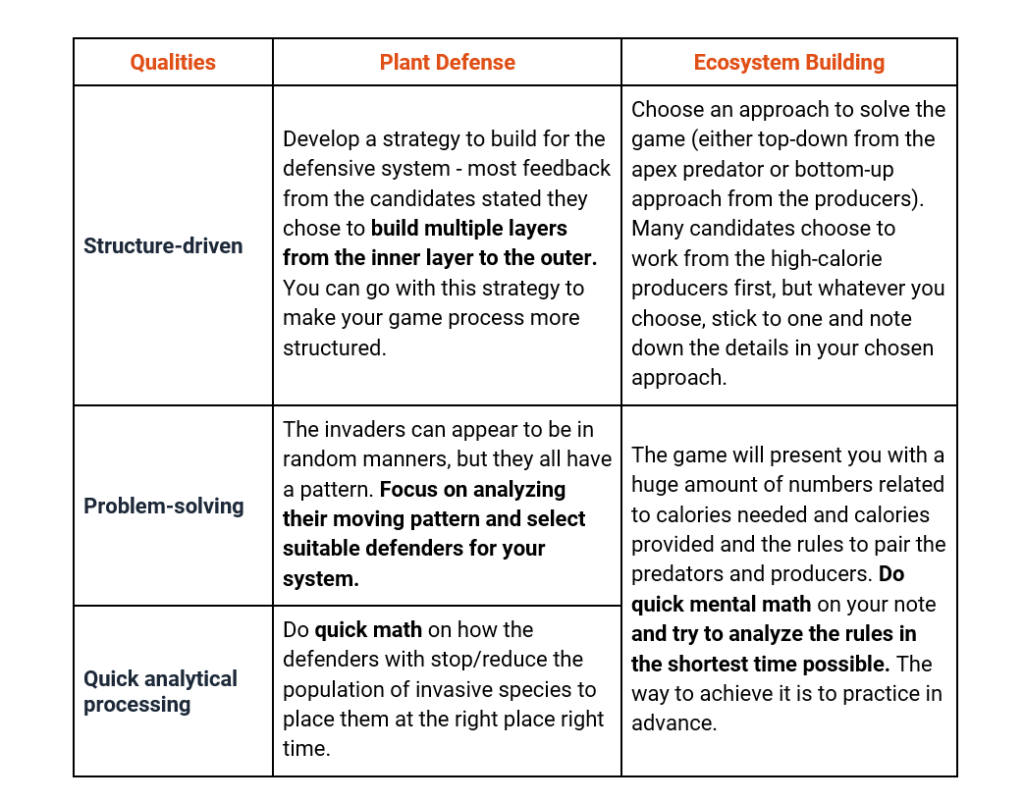Across all the forums of Reddit or Quora, you may encounter a lot of threads from the candidates asking whether they had done well in the McKinsey Problem Solving Game to land the next interview. Let’s get started with us to understand how McKinsey PSG works and how the candidates maximize their chances of getting an interview.
Why should I score high on the PSG assessment?
There are still controversies around whether a PSG score significantly affects the chance of getting the interview or what is a good score. But there are a few reasons that a high score could gain you benefits in McKinsey recruitment.
McKinsey has a challenging passing rate. According to different consulting prep sites, due to the highly competitive nature of McKinsey, the PSG passing rate usually ranges around 20-30%. This means, whether you like it or not, you need to be at least in the “safe zone” to make sure you are standing out from thousands of applications.
High PSG scores can support your resumé. If you are from a non-business background or your resumé doesn’t have an outstanding “wow” impression, the PSG test is an effective tool to demonstrate your capability to become a consultant. Good scores usually equal that you have demonstrated the quality needed of a McKinsey consultant; therefore, the hiring manager could make a more comprehensive decision and offer you the interview.
What is a good PSG score? - Candidate insights
To answer the question “What is a good score for PSG?”, the candidates who played Ecosystem Building and Plant Defense in PSG and then later got the interview reported that they got most to all of the species in their ecosystem survived at the end based on their calculation in the Ecosystem Building game, and usually survive around 25-40 turns in three rounds of the Plant Defense. This is a good insight into what score you should aim at for the McKinsey Solve.

What does PSG aim to assess?
As a part of consulting recruitment process, McKinsey Problem Solving Game surely assesses the skills that are crucial to the case interviews and real consulting work. The three qualities assessed in PSG are structure-driven, quick analytical processing, and problem-solving.
Structure-driven
The structure-driven mindset is one of the most crucial skills of a consultant. Consulting work requires you to break down the problems into smaller parts and have a get-to-the-point approach to solving the client’s case. The PSG assessment evaluates this quality by checking your final result in the game and the process to achieve that result to understand your approach to the game.
Quick analytical processing
The McKinsey Problem-Solving Game, particularly the three ecosystem-related mini-games, involves numerical and verbal reasoning aptitudes, which means that candidates need to acquire and interpret massive volumes of data swiftly. These abilities are required for case interviews and actual consulting work. As a result, increasing your mental calculation and reading speed is an essential element of PSG preparation.
Problem-solving
The nature of consulting is to detect and solve the clients’ problems. The PSG Game checks your problem-solving skills by evaluating how precisely and quickly you figure out the rules and analyze the patterns of subjects to get the result.

Understand McKinsey PSG criteria to ensure your high score
Now that you know what McKinsey looks for in a candidate in the Problem Solving Game, let’s take a look at how each game evaluates your consulting qualities
Ecosystem Building Score is calculated using the number of surviving species
The primary goal of Ecosystem Building (in McKinsey PSG description) is to create a sustainable ecosystem in a particular geographic area. From the insights of consulting prep experts and former candidates, the score of your final product is computed based on the number of surviving species and, particularly, how many species survive after the feeding process. Therefore, you should do your best to understand the eating rules and calculate the number for yourself.
Note: Ecosystem Building scores will not be shown to applicants in any manner in the McKinsey PSG test. McKinsey will not tell you how many chosen species survive during or after the calculation.
How to demonstrate consulting quality in the Ecosystem Building mini-game
- Structure-driven: choose an approach to solve the game (either top-down from the apex predator or bottom-up approach from the producers). Many candidates choose to work from the high-calorie producers first, but whatever you choose, stick to one and note down the details in your chosen approach.
- Problem-solving & Quick analytical processing: The game will present you with a huge amount of numbers related to calories needed and calories provided and the rules to pair the predators and producers. Do quick mental math on your note and try to analyze the rules in the shortest time possible. The way to achieve it is to practice in advance.
Plant Defense scores are calculated using the number of turns surviving.
The second scenario of the McKinsey Problem-Solving Game – Plant-Defense – is a turn-based tower-defense game. The candidate is charged with defending a plant at the center of a grid-based map from invading pests, using obstacles and defenders. There are two main objectives for candidates in this game scenario: (1) keep the plan alive after the 15 turns and (2) keep the plan from the invaders for as many turns as possible.
In general, the product score in Plant Defense is the number of turns you keep your plant away from invaders. Thus, try to achieve the highest number of turns possible.
How to demonstrate consulting quality in the Plant Defense mini-game
- Structure-driven: Develop a strategy to build for the defensive system – most feedback from the candidates stated they chose to build multiple layers from the inner layer to the outer. You can go with this strategy to make your game process more structured.
- Problem-solving: The invaders can seem to appear in random manners, but they all have a pattern. Focus on analyzing their moving pattern and select suitable defenders for your system.
- Quick analytical processing: Do quick math on how the defenders with stop/reduce the population of invasive species to place them at the right place right time.
How to demonstrate consulting quality in the McKinsey PSG?
Now you have understood the game mechanism, the next step is to try to show all of the consulting qualities while taking the PSG. After researching on candidates’ feedback and consulting prep expert’s viewpoint, we summarize all the tips in the table below.

We hope that you have gained some insight into the PSG and can get the preparation to land your interview.

